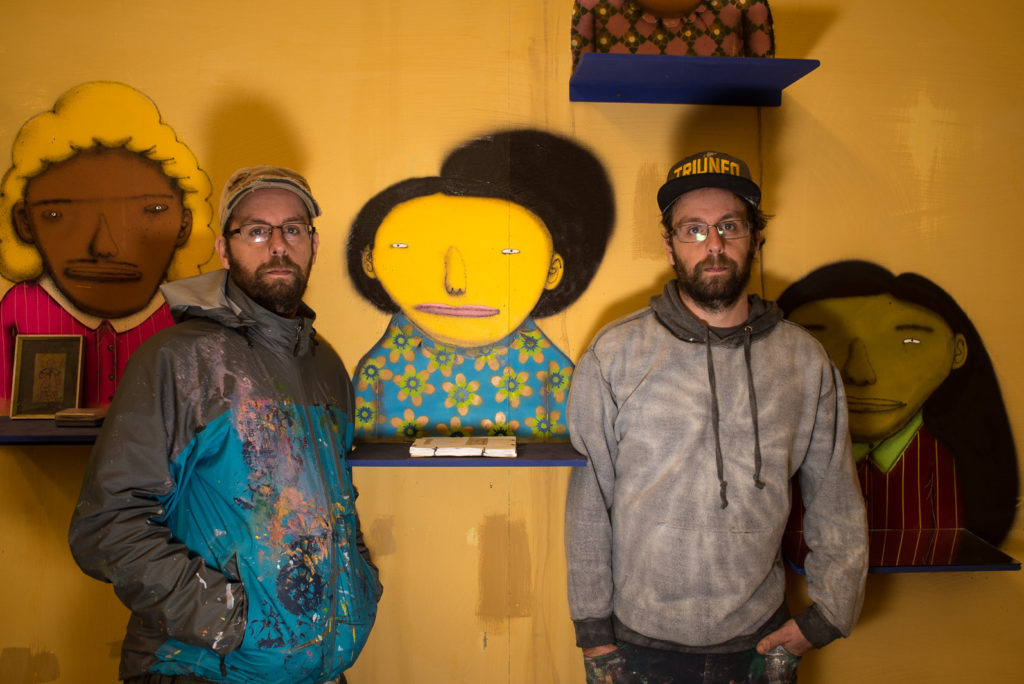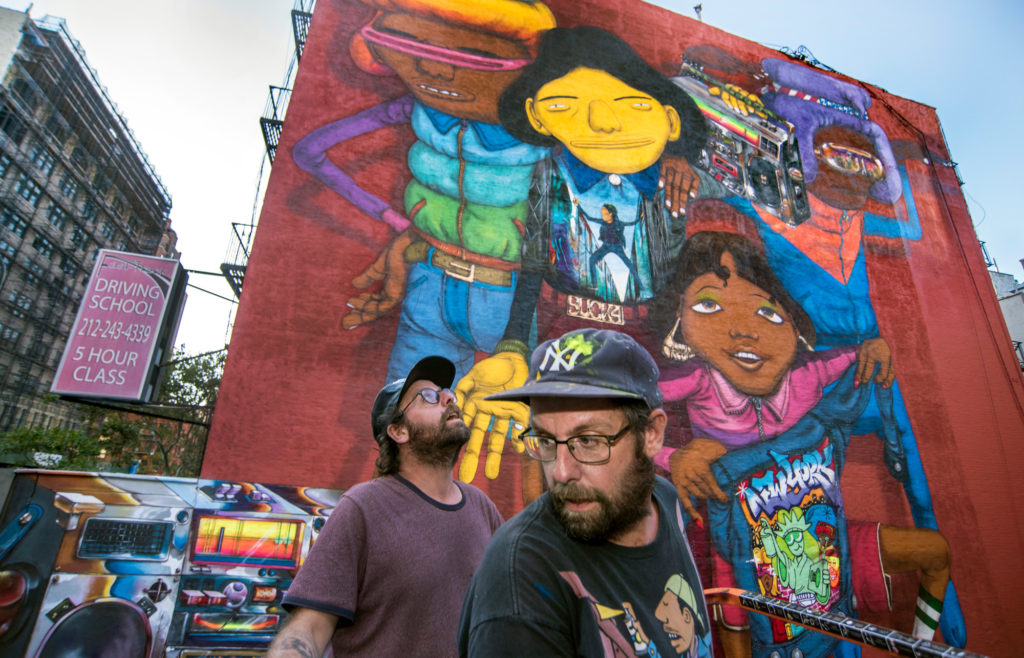RIO DE JANEIRO, BRAZIL – When the São Paulo Pinacoteca opened its doors over a century ago, two days a week were reserved for public schools. It was intended to encourage children’s visits. The educational programs gradually adjusted to the times. And when, in the early eighties, Margarida took her young sons – identical twins of seven years of age – to the museum, to a workshop, the monitor offered them a can of spray-paint to draw on the wall.
The first of their lives. Art became their way of expression and their life. ‘OSGEMEOS’ (“THETWINS”), the most international Brazilian graffiti artists, return to the Pinacoteca with full honors. They lead the reopening exhibition. The coronavirus forced the deferral of the ‘OSGEMEOS: segredos’ exhibition, scheduled for March. But the rich multicolored universe created by the duo seems made to measure for the moment. It is a powerful injection of vitality in these dark times.
The anthological exhibition of the Pinacoteca combines dozens of original works in Brazil and one thousand carefully preserved items that outline the successful trajectory that brought them back to the museum. Not only is Otávio de Gustavo (São Paulo, 1974) unable to be differentiated, even more so with masks and both dressed in black.

It is because for themselves and everyone around them it is as if they were a single person in two bodies. They are just one artist. They complement each other in a natural way to illuminate a work that began in the street with graffiti until embracing paintings, sculptures, installations, and, indeed, also graffiti. As in identical twin movies, one finishes the other’s sentences.
“I have the idea, he draws it. He has the idea, I draw it,” says Gustavo as he explains his working method, to which Otavio adds: “Or we both have the idea, we both paint together”. It has always been like this. “We can’t explain it. When we were kids we painted on paper, we didn’t need two sheets”. The exhibition includes two disturbing drawings, amazingly similar, which they painted separately without one knowing what the other was doing. Only the print on the T-shirts allows us to distinguish them during the interview, last Monday, sitting on a bench with the regular sound produced by one of their works.
The São Paulo Pinacoteca, a public institution, is restarting its activities with tickets sold out until December. Thanks to the sponsors, tickets are free. With reduced capacity and schedules, masks are mandatory. That’s why the artists refuse to pose without them.
Their creations take up the façade of the building to the most spectacular spaces. It soon becomes clear to visitors examining the content of the exhibition spaces that the Pandolfos do not throw anything away. The whole family rummaged through their belongings to create an exhibition that includes children’s drawings, drawing notebooks, teenage printed t-shirts, and the hip hop music that accompanied their first incursions to add color to the gray São Paulo. Among the artistically mature works, feature their stylized yellow characters, fantastic creatures, installations with stunning gadgets or their collaboration with Banksy in 2011.
A one-on-one combination of Brazilian hooded artists colorful graffiti and obscure British riot police officers. These artists are more interested in the playful than the political. “Our work is born from our need to express ourselves, to find new ways to talk to people. To express discontent with the unfair, to convert the sadness out there into something beautiful, positive, playful”, they say. They consider themselves art workers who, with perseverance and a much study, have turned a passion into a craft with which to earn a living and that has catalyzed them to international success. From what they say, they were good children, the kind that do not disappoint.

They would spend their whole time drawing, listening to hip hop, and going out at night to paint walls in this megalopolis that they consider one of the world’s graffiti capitals, alongside Berlin, New York, and Barcelona. When they announced at home that they wanted to be artists, their mother, an embroiderer, and their father, a chemist, supported them. They had fulfilled the requirement to finish school. Although their horizons have greatly expanded, they maintain their studio in the central neighborhood of graphic workshops where they grew up. And they still go back to graffiti from time to time.
“When we feel like it, we go out into the street,” one of them says. Always together. But they emphasize that this genre belongs on the streets. They perceive graffiti as something incompatible with a museum. “This has nothing to do with graffiti. For us, graffiti is out there. It’s the illegal, the transgression.” It’s ironic that this museum, owned by the State of São Paulo, welcomes them when just six months ago the local authorities erased one of their graffiti on the street. The most recent of many they saw vanish under the gray painting of a city worker.
“They don’t have to erase our graffiti, but they don’t have to erase anyone’s! They shouldn’t spend public money on that. Brazil has sanitation, healthcare, violence problems … much more serious problems than worrying about who is painting a wall”. Nor have they turned their backs on commercial adventures, such as when a few years ago they painted a scarf for Louis Vuitton or paint murals in the living rooms of wealthy collectors. The news that the legendary Banksy has just sold a painting for 8.5 million euros (about R$58 million) takes them by surprise, but it seems “cool” to them.
They met the enigmatic artist a long time ago when he was just one more. The only thing they disclose is that the meeting occurred abroad. Not another word. They are also amazed to see that he managed to preserve his anonymity until today. The career of OS GEMEOS is powerful, international, began in 1998 with their first invitation to visit Germany, and took off permanently in 2005 with a solo exhibition in a New York gallery. “That’s where everything changed in our lives,” these artists say in amazement, used to travel all over the world until the pandemic hit. They had exhibitions at the London Tate, the Tokyo Museum of Contemporary Art, and Times Square.
And in Spain, they have a large mural at the Montana paint company’s factory in the province of Barcelona. The first in the world, they emphasize, to produce a specific paint for graffiti artists. Their painting skills come from the family. Their older brother and mother are excellent drawers. Their parents have always nurtured the artistic restlessness of the four children. “Exhibiting at the Pinacoteca has opened doors for new generations of artists, showing that when you believe in your dreams, it is possible to live from art”. Children visiting the museum workshops and their families may take note of this.
Source: El País

